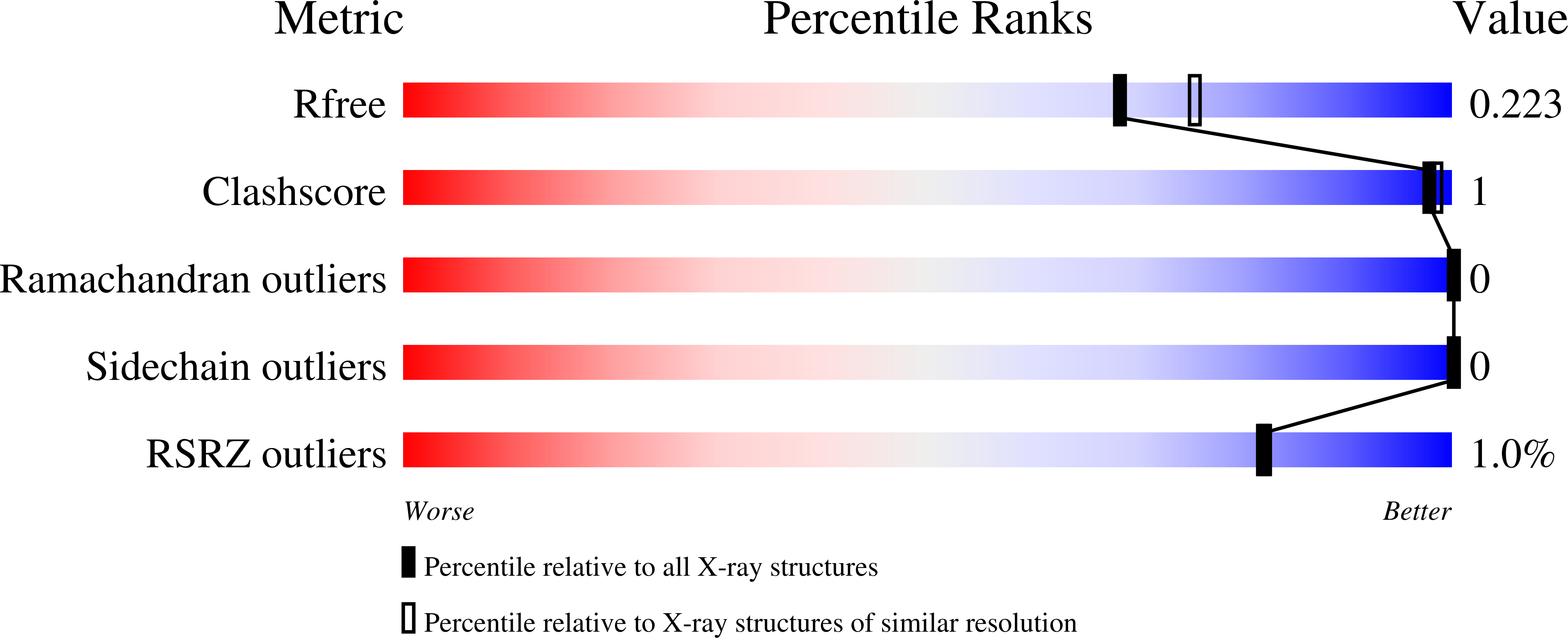Active Site Flexibility as a Hallmark for Efficient PET Degradation by I. sakaiensis PETase.
Fecker, T., Galaz-Davison, P., Engelberger, F., Narui, Y., Sotomayor, M., Parra, L.P., Ramirez-Sarmiento, C.A.(2018) Biophys J 114: 1302-1312
- PubMed: 29590588
- DOI: https://doi.org/10.1016/j.bpj.2018.02.005
- Primary Citation of Related Structures:
6ANE - PubMed Abstract:
Polyethylene terephthalate (PET) is one of the most-consumed synthetic polymers, with an annual production of 50 million tons. Unfortunately, PET accumulates as waste and is highly resistant to biodegradation. Recently, fungal and bacterial thermophilic hydrolases were found to catalyze PET hydrolysis with optimal activities at high temperatures. Strikingly, an enzyme from Ideonella sakaiensis, termed PETase, was described to efficiently degrade PET at room temperature, but the molecular basis of its activity is not currently understood. Here, a crystal structure of PETase was determined at 2.02 Å resolution and employed in molecular dynamics simulations showing that the active site of PETase has higher flexibility at room temperature than its thermophilic counterparts. This flexibility is controlled by a novel disulfide bond in its active site, with its removal leading to destabilization of the catalytic triad and reduction of the hydrolase activity. Molecular docking of a model substrate predicts that PET binds to PETase in a unique and energetically favorable conformation facilitated by several residue substitutions within its active site when compared to other enzymes. These computational predictions are in excellent agreement with recent mutagenesis and PET film degradation analyses. Finally, we rationalize the increased catalytic activity of PETase at room temperature through molecular dynamics simulations of enzyme-ligand complexes for PETase and other thermophilic PET-degrading enzymes at 298, 323, and 353 K. Our results reveal that both the binding pose and residue substitutions within PETase favor proximity between the catalytic residues and the labile carbonyl of the substrate at room temperature, suggesting a more favorable hydrolytic reaction. These results are valuable for enabling detailed evolutionary analysis of PET-degrading enzymes and for rational design endeavors aiming at increasing the efficiency of PETase and similar enzymes toward plastic degradation.
Organizational Affiliation:
Institute for Biological and Medical Engineering, Schools of Engineering, Medicine, and Biological Sciences, Pontificia Universidad Católica de Chile, Santiago, Chile.















